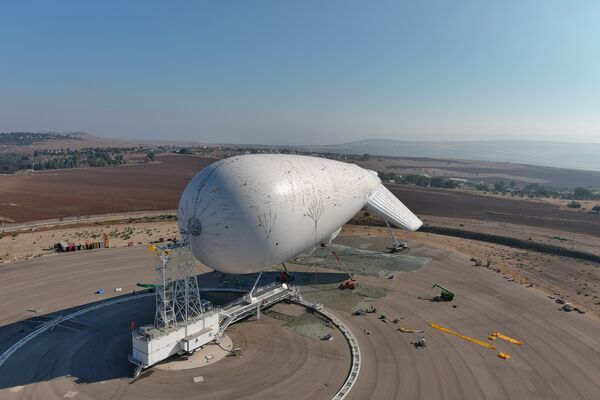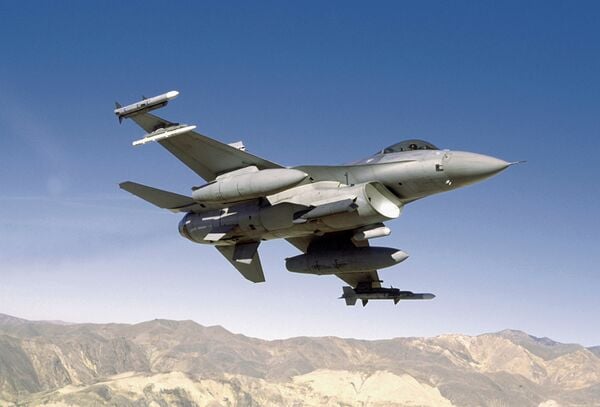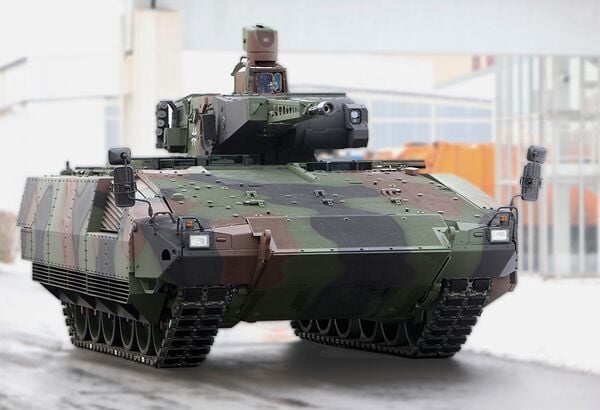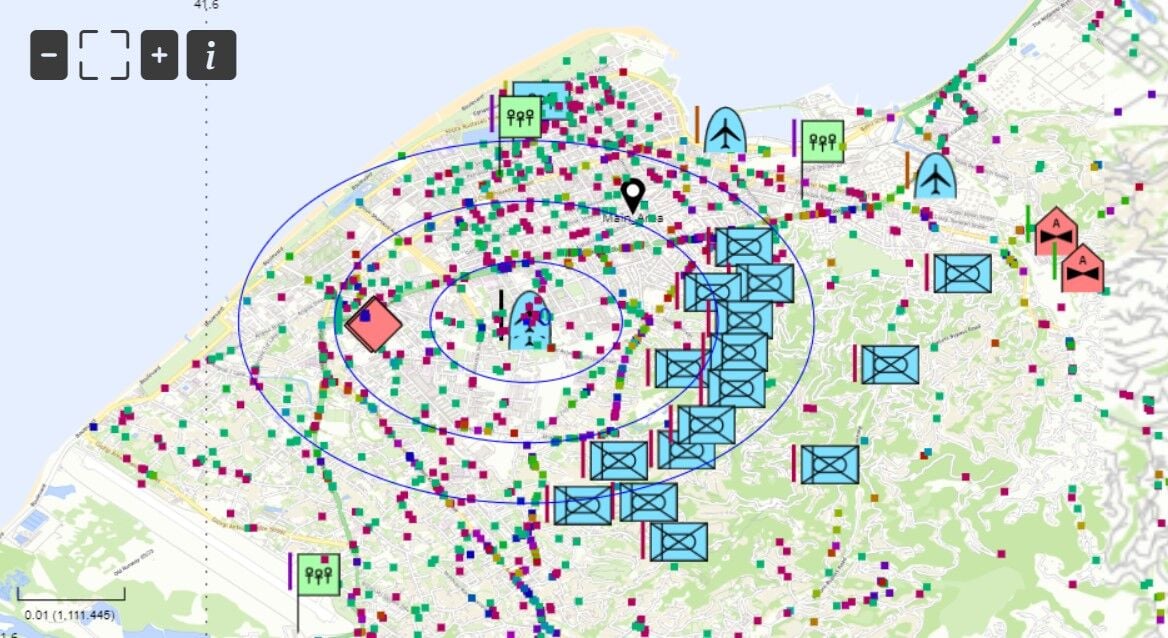- About
- Intara
- Capabilities
- Advisory
- Resources
- News
- Store
Israel deploys new aerostat radar
04 November 2021
by Yaakov Lappin


The TCOM aerostat that will carry the Sky Dew elevated radar system, at a site in northern Israel. (Israeli Ministry of Defense)
The Israeli Ministry of Defense (MoD) announced on 3 November that the Israel Missile Defense Organization (IMDO) is testing an aerostat with a new radar capable of detecting long-range threats.
It said the High Availability Aerostat System (HAAS) was made by the US company TCOM and was recently inflated at a site it has established in northern Israel. The radar has been developed with the US Missile Defense Agency, and Israel Aerospace Industries' (IAI's) Elta subsidiary is the prime contractor.
“The elevated sensor system is comprised of the HAAS and an advanced radar designed to detect incoming threats at long ranges when operating at high altitudes,” the MoD said. “It will provide additional detection and early warning capabilities to the existing operational air defence detection array deployed around Israel.”
Lockheed Martin to ramp up UK Sniper production
24 April 2024
by Gerrard Cowan


Seen being carried by a US Air Force F-16, the Sniper ATP is built in Florida in the US and Bedfordshire in the UK. Lockheed Martin is now ramping up UK component production to meet increased customer demand. (Lockheed Martin)
Lockheed Martin is building a new production line for AN/AAQ-33 Sniper Advanced Targeting Pod (ATP) components at its Ampthill, Bedfordshire site in the UK, seeking to meet anticipated demand from NATO allies and other customers for the system, the company has told Janes .
The UK-based work on Sniper supports the manufacturing activities at Ocala, Florida. This work has been expanded with a new production line at Ampthill that will focus on producing cabling to integrate the system into aircraft.
Stacy Kubicek, Lockheed Martin's vice-president and general manager – sensors and global sustainment, said the fresh investment is part of a wider strategy at Lockheed Martin. She placed it into the context of a shifting outlook among customers.
Germany orders simulators for Puma IFVs
19 April 2024
by Olivia Savage


The Bundeswehr has ordered 258 sets of AGDUS systems for its Puma IFVs following successful integration tests. (PSM GmbH)
The Bundeswehr is receiving new training simulators for its Puma infantry fighting vehicles (IFVs).
In total, 258 sets of Training Device, Duel Simulator (Ausbildungsgerät Duellsimulator: AGDUS) systems are being delivered for the Puma IFVs by the end of 2026, the Bundeswehr announced on 15 April.
The EUR109 million (USD116 million) contract will be financed from the EUR100 billion Bundeswehr special fund.
A Rheinmetall/Krauss-Maffei Wegmann (KMW) consortium received an order from the Bundeswehr in December 2019 valued at EUR54 million for the provision of six AGDUS systems for integration tests on the Puma. Full-scale serial production of AGDUS would then begin once testing was complete, with up to 252 Puma IFVs being equipped with the systems for EUR88 million.
A Rheinmetall spokesperson confirmed to Janes that the company, along with KMW+Nexter Defense Systems (KNDS) Germany, are supplying the new AGDUS simulators to the Bundeswehr and that full-scale production has now officially begun.
Hadean, 4C Strategies integrate products to reduce training burden
18 April 2024
by Giles Ebbutt


A screenshot of the Hadean POLI constructive simulation displayed through the 4C Strategies Exonaut training management software. (Hadean)
Hadean and 4C Strategies have successfully integrated a constructive simulation with Exonaut exercise management software, utilising Hadean's spatial computing platform.
The integrated solution, displayed at the International Training Technology Exhibition & Conference (IT²EC) 2024 in London, enabled Hadean's Pattern of Life Indicator (POLI) constructive simulation to be controlled from within 4C Strategies Exonaut software.
Exonaut is widely used in the UK and NATO as an exercise management tool, while constructive simulation is fundamental to effective command and staff training. Integrating the two previously separate functions offers the potential to improve training.
Explaining the integration, Paul Steel, UK military sales director for 4C Strategies, told Janes
The Israeli Ministry of Defense (MoD) announced on 3 November that the Israel Missile Defense Organi...
Latest Podcasts
Iran Israel analysis
In this podcast Janes analysts discuss the Iranian attacks on Israel on the 14 April. They highlight the military systems used by Iran and the performance and impact of these on Israel. They also discuss the implications of this attack goi...
Listen nowJanes Case Studies
Using Janes Intara to build a common intelligence picture: Russian build up on the Ukrainian border
View Case StudyNews Categories
 C4ISR Details
C4ISR Details